11+ SAMPLE Small Business Inventory
-
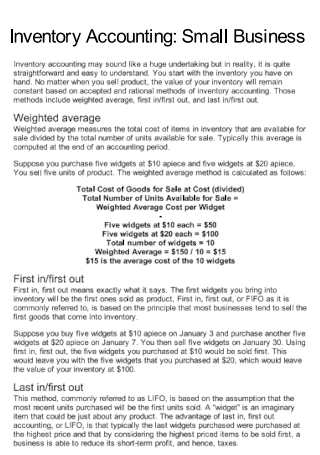
Inventory Accounting Small Business
download now -
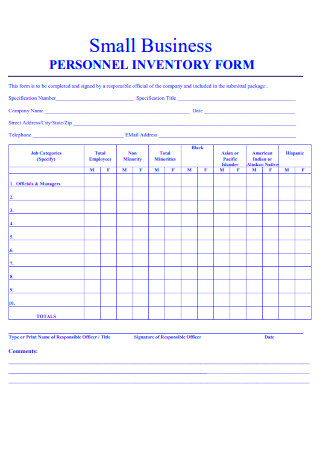
Small Business Personal Inventory Form
download now -
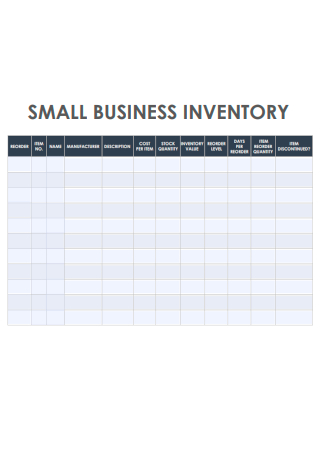
Sample Small Business Inventory
download now -

Small Business Strategies for Inventory Management
download now -
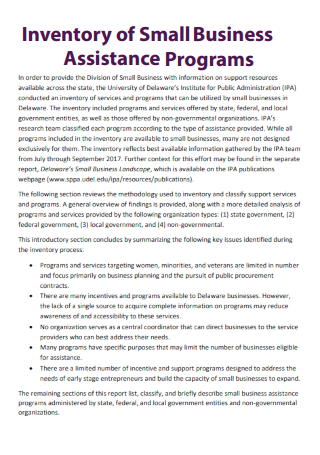
Inventory of Small Business Assistance Programs
download now -
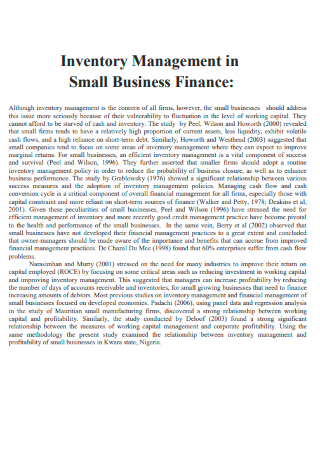
Inventory Management in Small Business Finance
download now -
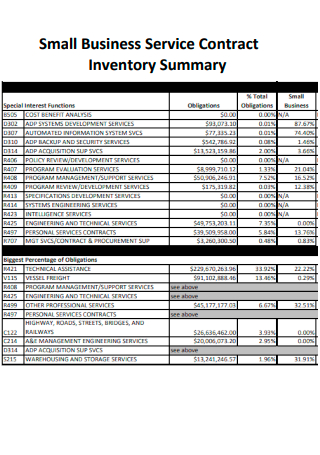
Small Business Service Contract Inventory Summary
download now -
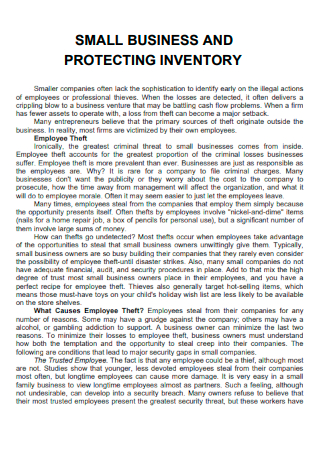
Small Business and Protecting Inventory
download now -
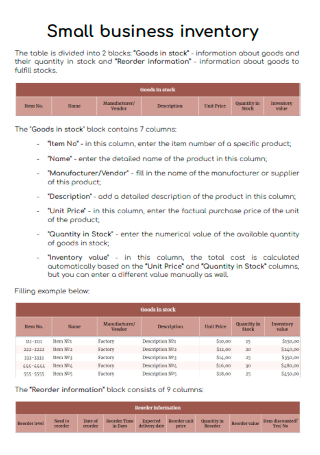
Formal Small Business Inventory
download now -
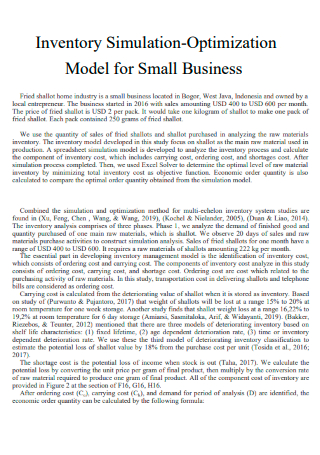
Inventory Simulation Optimization Model for Small Business
download now -
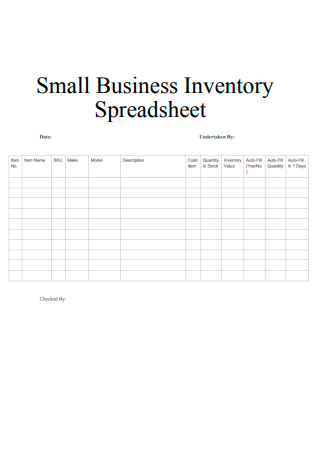
Small Business Inventory Spreadsheet
download now -
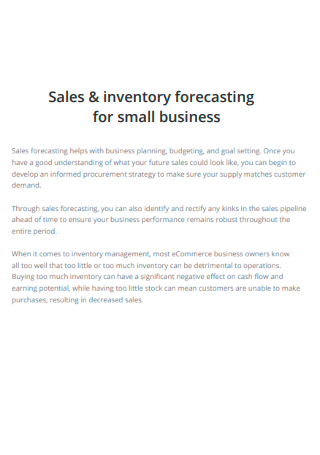
Sales & Inventory Forecasting for Small Business
download now
What is a Small Business Inventory?
A small business inventory is a process that your small business has to go through to know about your stock of products. Through this process, you will know how many sales you have made and how many products are still left to be sold. You have to go to the storage of your business and check the available products that are still in it. It may not be an easy task to examine your warehouse and check the products one by one. But you should make an inventory so that you can monitor your sales and will know your available resources. This is to be done to know that you are not wasting any resources of your company. You have to tally your sales with the products that are left in your warehouse.
By doing a small business inventory, you will know if you still have available resources to use. You will know if an item is out of stock or not. You will also know if you have lost some money because of the stock surplus. As a part of supply chain management, you will know if you have the right number of products that will be available for sales. You will know your need for manufacturing or getting products from your suppliers. You can maximize your sales with the help of the inventory system. You need to have good inventory management so that you can have a good process in your inventory.
Principles of accounting may apply as you make a small business inventory. You need a spreadsheet that will have the calculations about your products and your every expense. A ledger can help you so you can analyze your status in sales. In doing an inventory count, you need your computer and a thorough inspection of your warehouse. You will know the income of your company by doing the inventory. You can have an accurate calculation of your sales regarding the products that have been left in your storage room. The inventory sheet can tell you how much you have been selling for the past weeks or months. You will even know the amount of office supply that has been left in your company.
It will always be good for us to examine every product through small business inventory management. We just have to do a little paperwork but we can assess how far we are going in our business. Doing an inventory is a good tracking system that can give us the best management of our products. We must get a balance between our sales and the products that are still in our storage room. Or something bad may be happening in our business. By having a spreadsheet for the stock inventory, you can be assured that no one is stealing from you or wasting your resources. Thus, you can save a lot of money and you can have the profit that you need. So, you need to have a small business inventory because this will truly be helpful to you.
You can have the right products when you are doing a small business inventory. You can have the right funds to ensure that you will not lack any products that you need. You can prevent spoilage of products and you can sell them on time. To make your work easier, you should use a small business inventory management software or a small business inventory app. They can give you a lot of benefits. The following are what small business inventory software can do:
- Lessen the cost and improve the baseline of your business
- Monitoring your inventory in real-time
- You can monitor your inventory in different locations
- Speeding up the process by bar code scanning
- Accessible even after you make sales
- Allows you to make an inventory in any device
- Avoids the chance of excess stock
- You will not have too many raw resources
- Avoid shortages in production
- Your sales forecast will be better
Tips on Small Business Inventory
Are you looking for a business inventory example? Do you need it because you want to have some tips that you can use in creating a small business inventory? If tips are what you need, we can help you. We can offer you some tips that you can apply in making a small business inventory. Consider the following tips:
How to Make a Small Business Inventory
Do you need a small business inventory template? Are you about to make a small business inventory? Maybe you need some steps that you can use. Well, we can provide you with some steps that you can apply. Have the following steps:
1. Organize the Vendor Data
You need to set up your stock first to have an inventory. Make an easy-to-reach system for the supplier’s data. You can use a manual monitoring technique like using spreadsheets. But you can have the better choice of having a point-of-sale (POS) system. The POS can have the direct data of the vendor. It can provide you with pages where you can search for your products. You can pick from a variety of POS systems. Research how each one performs and select the best one that will suit your taste. Then, you should organize your products. Record the data about each item. Compile the data on the product page. The information that you need are the selling price, the standard retail price, the wholesale price, the category of the product, the description of the product, the Universal Product Code (UPC), the SKU (stock-keeping unit), the quantity of product, the product name, the image of the product, the shipping data like dispatch time and size, the quantity of reorders, the name of the manufacturer, the color of the product, and the size of the product. Aside from the log of the products, you should include the vendor’s data. The needed data are the showroom contact, the payment terms, the website of the vendor, the billing data, the email or phone number of the vendor, and the vendor’s name.
2. Submit Right Purchase Orders
You need POs (Purchase Orders) to document the sale of your products. This is the best way to manage your purchases. You can monitor your stock purchase effectively. From the time that you have made an order up to the shipment, you will have a record of everything. POs are financial receipts that can record your transactions. You need to have them so that you can analyze your cash flow. You will have a forecast of your needs in the inventory. Through POs, you can monitor your purchases from your suppliers. You can have a cross-reference with your deliveries. You can have the right inventory count through this. For example, if you order 500 shirts from a supplier, you can use the PO to record the transaction. The PO will have the total price, descriptions, and quantities of the products. When they are delivered to you, you can check the PO if the products you have received are what you have ordered accurately. POs are done through email or other means. If the seller does not have a PO form, you can have a PO template from the internet and send it to the vendor. POs are important so you must not forget them every time you make a purchase.
3. Get the Right Inventory Orders
Once you have made a PO, you should ascertain that you can get the stock accurately. Some suppliers may commit some errors. So, if you want your inventory to be accurate, you should check the products that you have received. Be diligent so that you will not have an overcount or underestimate in your inventory. To be sure about your purchase, you should count each box and check all the items. You may never know if some of the products are damaged. So, you have to check them one by one. Check if what you have received is what is written in the PO. You can also do that by checking the packing slips that are given by the suppliers. The packing slip should match your PO. If there are no discrepancies, then you have received the items accurately.
4. Do the Inventory Using Tags
When you have the products on hand, you should label each product. The label should state two things: the price and the product label. The price will be the selling price of the products. Before they can reach customers, you need to state a price for them so that customers will know if they can buy them. The product label is the labeling system of your business that can make you monitor your products. You can use a barcode system to make the process easier. Making tags is necessary for the receipt process. So, you should know how you can label your products correctly. Through tags, you can ascertain that the products will not be unlabeled on the shelves. The labels can help you to sell your products. If the manufacturer already has a barcode, you can use this by utilizing them through your POS. You just have to give a label on products.
5. Organize Your Warehouse
You need to organize your warehouse so that inventory will be easier for you and your staff. You can even stock as much merchandise if you organize your stockroom. Have tall shelves and hanging racks where you can maximize the space. Just be sure that the products will be accessible in all of these. You can also have storage bins so that you can use the floor for storage. Ascertain that you will have the right storing devices. Use these materials so that you can have a well-organized inventory.
6. Monitor Your Inventory
Monitor your inventory in real-time. This is the key so that you can store products in the right quantities. So, you should have great inventory management. Whether you have the inventory by hand or by a POS, you should have a detailed record of every sale. This is how you can adjust the inventory levels of your business. To ensure accuracy, you must use good inventory management software. Spreadsheets can be good but POS systems are more advisable. POS systems can make you have a good count for every sale. You will have order alarms and instant PO generation.
7. Have Inventory Counts
Doing inventory for your products one by one may be tedious. But physical counting can erase inventory problems. You have to know that you need to have a full inventory count. So, you must ensure that you can do a proper inventory for all your products. Whether you are going to have a manual or automated counting, you should ascertain that you will have a regular inventory count.
FAQs
Are spreadsheets good for small business inventory?
Spreadsheets may not be an effective inventory tool. You have to do everything manually. But they can be a good tool for small businesses.
Is business inventory software expensive?
Not really. Some may cost hundreds. Some may cost thousands of dollars. It is up to you to choose the software that can be good for your business.
Small business inventory is a must for every small business. You need to keep track of your products to know if you are making enough sales for your business. You need to monitor where all your products are going. This will benefit your business because you will not waste any of your resources. Well, do you need a template for a small business inventory? This post has 11+ SAMPLE Small Business Inventory in PDF. You can have a great small business inventory for your business by using these templates. What are you waiting for? Download now!
